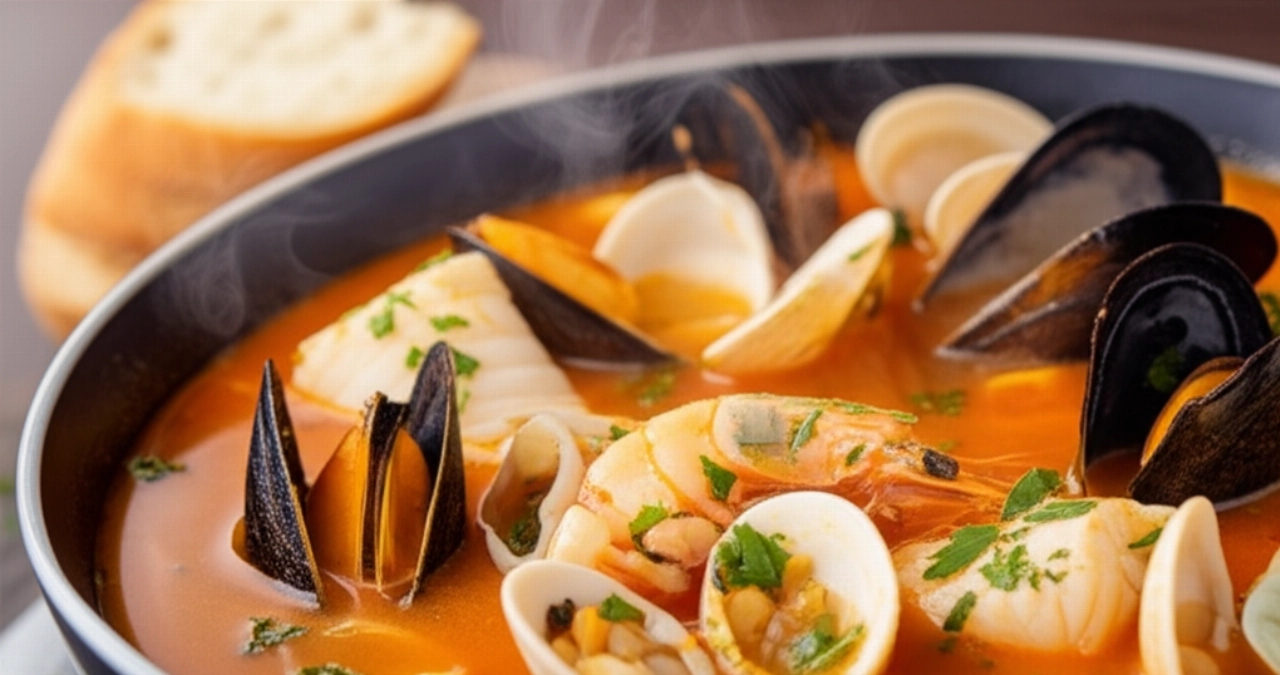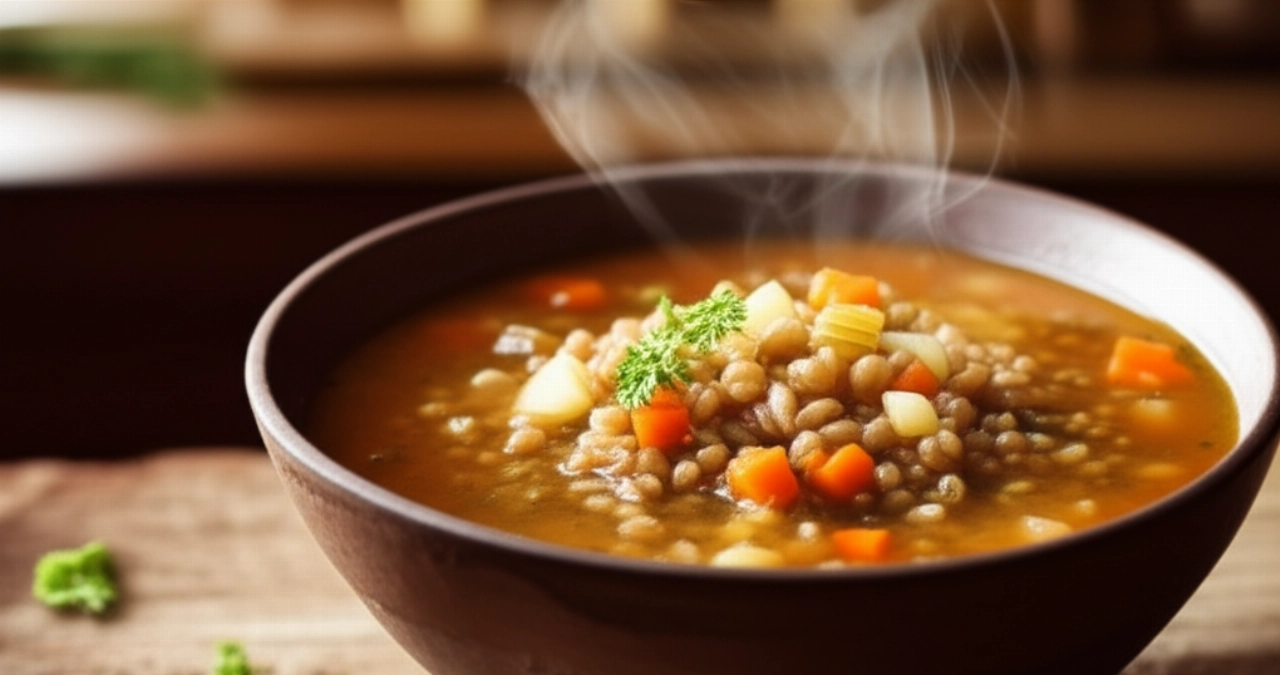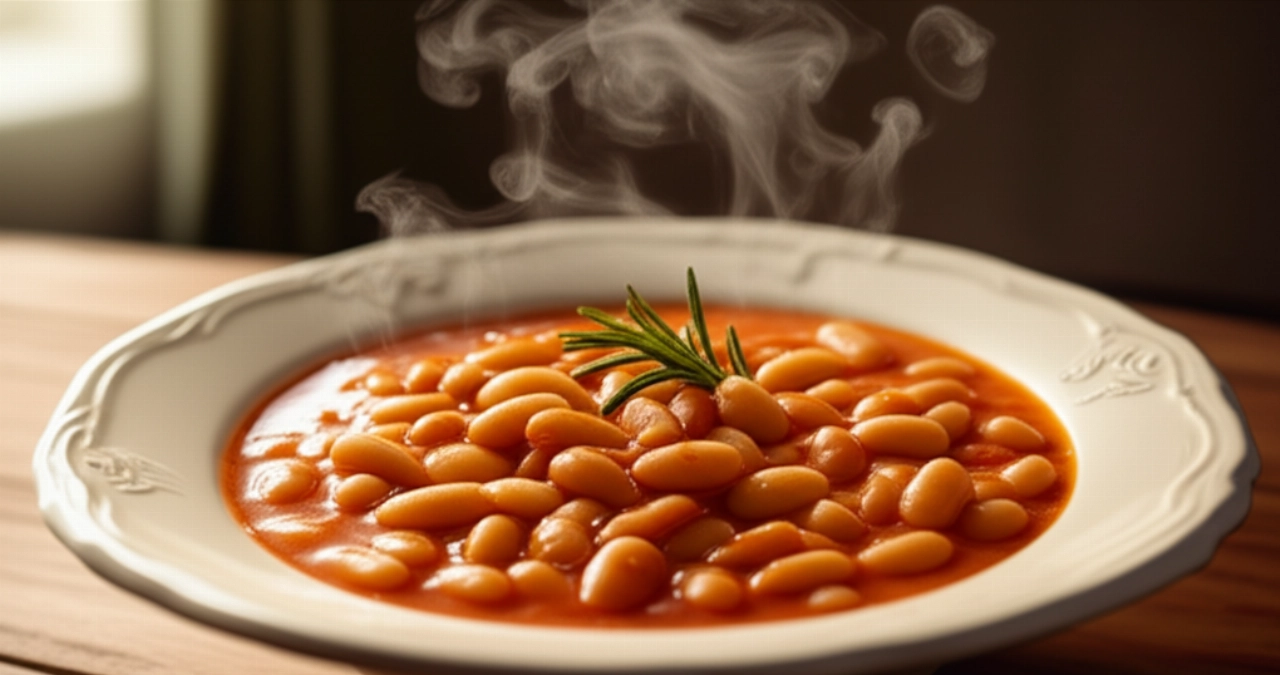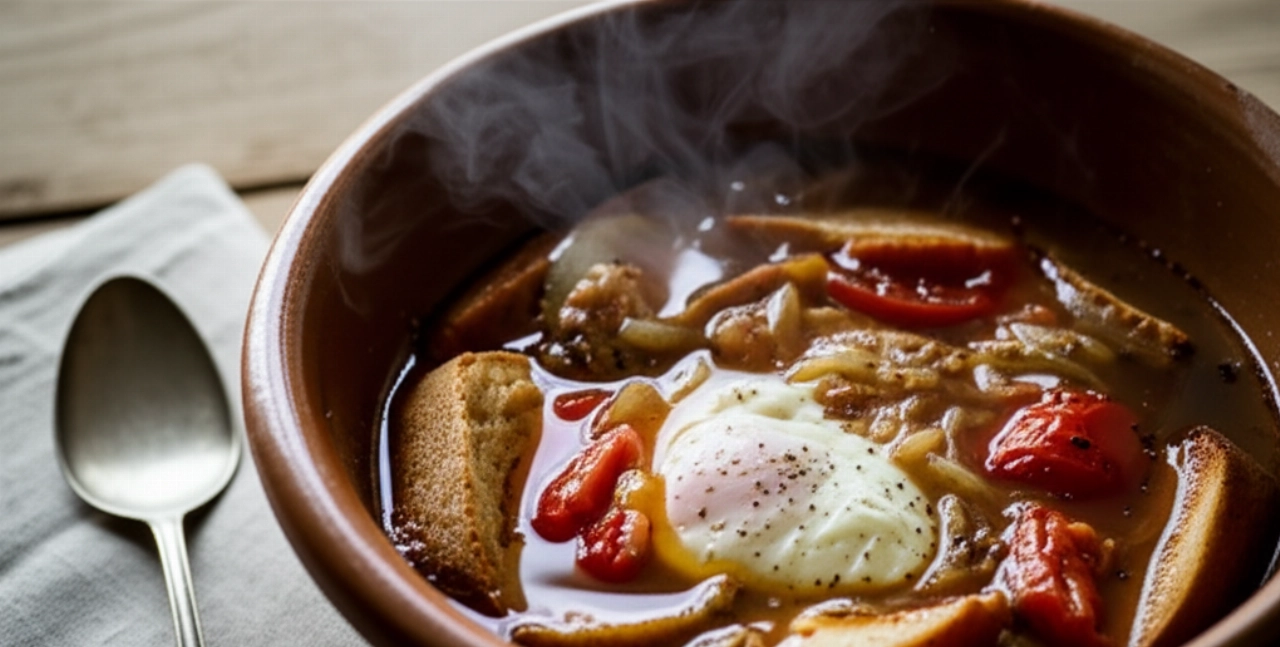There's a scent that smells of home, of mountains, of history. An aroma that, just by smelling it, transports you to a warm and welcoming kitchen where time seems to stand still. I'm talking about Triestine Jota, an iconic dish from the culinary tradition of Friuli-Venezia Giulia, a true hug in a bowl, perfect for warming up the coldest evenings.
But how many times have you tried to make it and the result wasn't what you hoped for? Too sour, too watery, or simply not 'the real one', the one you remember from your grandmother's hands or tasted in a typical trattoria? I understand your frustration. Finding the authentic recipe, one that guarantees success and unmistakable flavor, can seem like a real challenge.
Make yourself comfortable. Today I'm revealing all the secrets to preparing the perfect Triestine Jota, the one that will make you exclaim 'finally!'. Not just a list of ingredients, but a detailed guide, full of tricks and practical tips, to achieve a balanced, flavorful, and authentic dish. Success is guaranteed, and the taste of home will envelop you.
My strategic angle for this Jota is AUTHENTIC WARMTH AND BALANCED PERFECTION. The promise is: I'll guide you step by step to create a Triestine Jota that is not just a soup, but a warm and flavorful embrace, with the perfect balance between the sauerkraut's acidity, the beans' sweetness, and the potatoes' body, just like a Triestine grandmother used to make it.

Smart Ingredients for a Textbook Jota: The Choice That Makes a Difference
Every great dish begins with quality ingredients, carefully chosen. For Jota, selection is fundamental to ensure that balance of flavors that makes it unique.
- Sour Sauerkraut (Kapus Kisli): This is the main ingredient. Do not use pre-cooked canned ones, which are often too sweet or bland. Look for fermented sauerkraut, the kind you find at the deli counter or in refrigerated containers. Its acidity is the backbone of the dish. If they are very sour, you can quickly rinse them under cold water before using them, but not too much, otherwise you'll lose the characteristic flavor.
- Borlotti Beans: You can use dried borlotti beans (to soak overnight and cook) or, to save time, good quality canned ones. If using canned, rinse them well to remove the preserving liquid and reduce excess salt.
- Starchy Potatoes: Choose white-fleshed potatoes, like Russet or Kennebec. They are perfect because they break down slightly during cooking, releasing starch and helping to give creaminess and density to the soup, without the need for artificial thickeners.
- Smoked Meat: Smoked pancetta (or špeh) is ideal for its intense flavor and its ability to release fat that enriches the soffritto. Alternatively, you can use smoked pork ribs or even a piece of pork rind for an even deeper and more traditional flavor.
- Garlic and Bay Leaf: These aromatics are essential for giving depth and fragrance to the soup. Don't skimp on the garlic, but use it with balance. Bay leaf, with its balsamic note, pairs perfectly with sauerkraut.
- White Flour: Used for the zaprac, the traditional roux that thickens the Jota and gives it a velvety consistency.
- Vegetable or Meat Broth: A good broth is the base for a rich flavor. You can use light vegetable broth or, for a more robust taste, a not-too-salty meat broth.
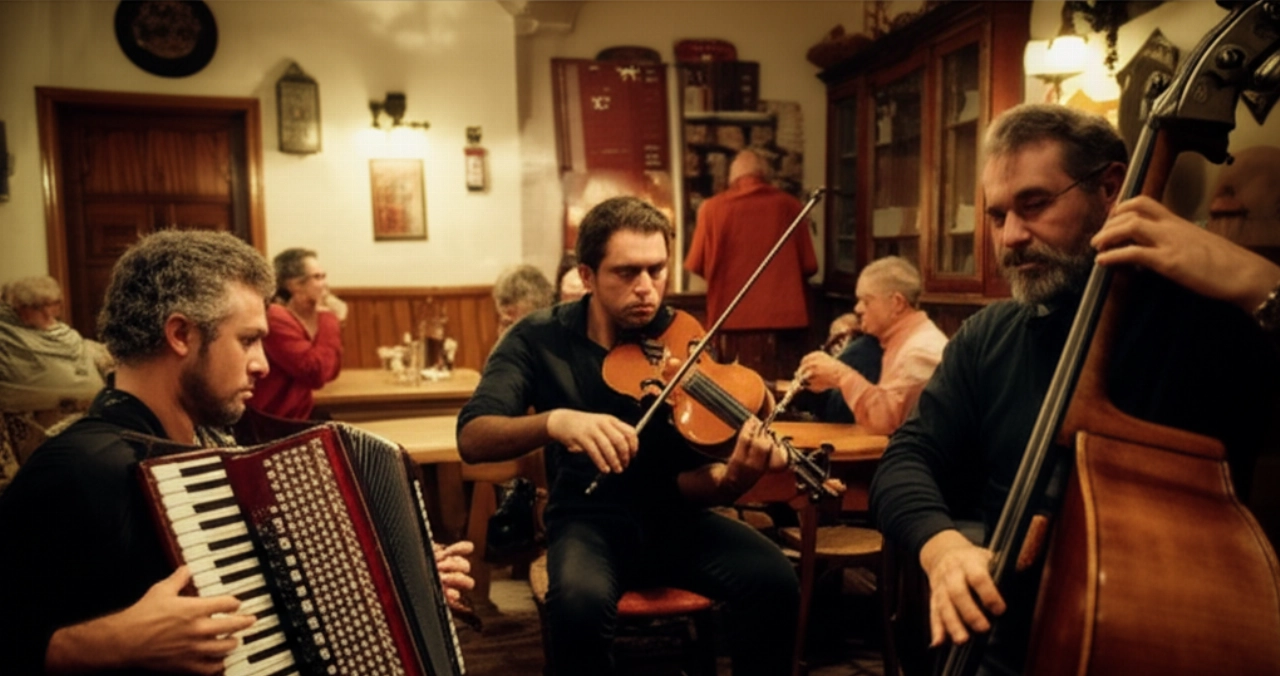
3 Common Mistakes in Triestine Jota (and How to Avoid Them)
Even a simple dish can hide pitfalls. Here are the most common mistakes you might make and how to avoid them for an impeccable Jota:
- Wrong Sauerkraut: The most frequent mistake is using unsuitable sauerkraut or not managing its acidity correctly. If your sauerkraut is too sour, rinse it well under cold running water before cooking. Taste a piece: if it's still too strong, you can blanch it for 5-10 minutes in clean water, then drain it. This will soften it and reduce the acidity without removing its character.
- Not Creating the “Zaprac” Correctly: The zaprac (a simple roux of flour and fat) is fundamental for the consistency. If you burn it or don't cook it enough, the Jota will have a bitter or raw flour taste. Cook it over low heat, stirring continuously, until the flour has taken on a nice golden color and a toasted aroma. Don't rush this step!
- Not Balancing the Flavors: Jota is a balance between the acidity of the sauerkraut, the sweetness of the beans, and the savoriness of the meat. If it's too sour, you can add a pinch of sugar or a teaspoon of vegetable broth to balance it. If it's bland, adjust the salt only at the end, after all the ingredients have released their flavors. Remember that pancetta is already salty!
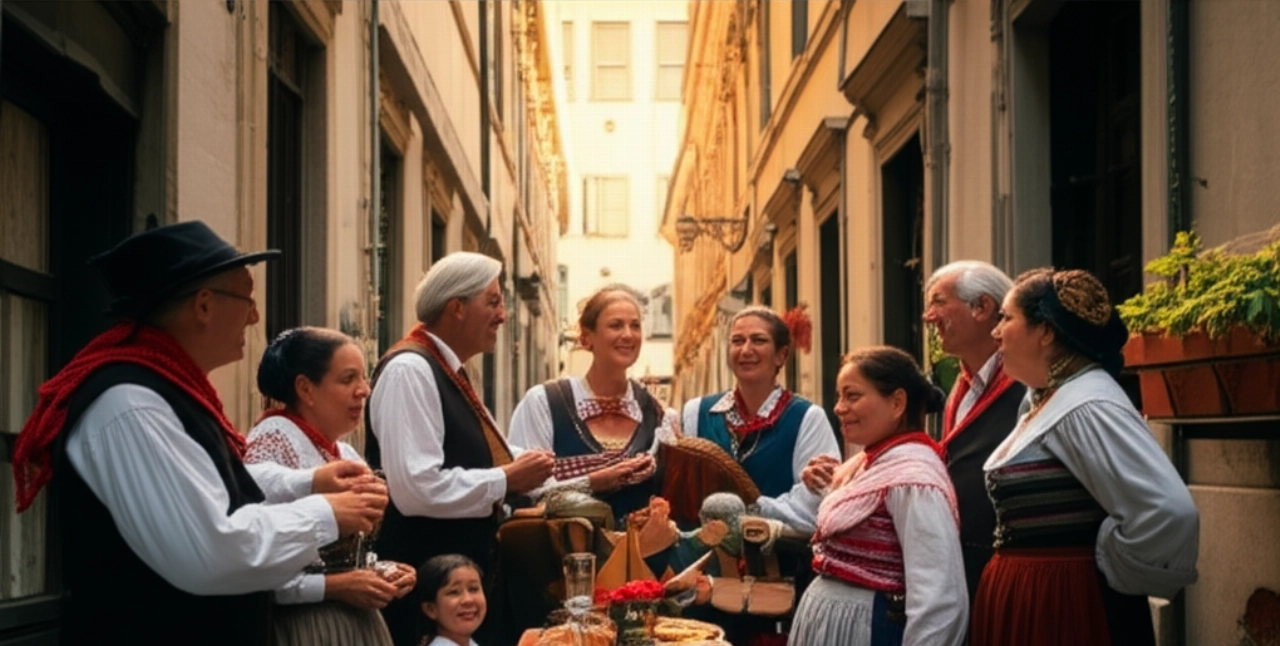
Grandma's Secret: The Magic Touch for an Unmistakable Jota
My grandmother, a true Triestine, always said that Jota is like a good wine: it improves with time. And she was right! Her secret wasn't a secret ingredient, but an approach: patience and rest.
She would prepare the Jota the day before serving it. After cooking, she would let it rest in the pot, covered, at room temperature (or in the fridge if the season required it) overnight. The next day, she would reheat it slowly. This allowed all the flavors to meld, to 'marry' each other, creating a depth and complexity that a freshly made Jota cannot have. The sauerkraut and beans absorbed the aromas better, and the soup became incredibly richer and more enveloping. Try it yourself, the result will surprise you!
Let's Prepare Triestine Jota Together: The Step-by-Step Guide
Ingredients (for 6-8 servings):
- 500 g sour sauerkraut (fermented)
- 300 g dried borlotti beans (or 2 cans of 400g pre-cooked borlotti beans)
- 300 g starchy potatoes
- 150 g smoked pancetta (or smoked pork ribs)
- 2 cloves garlic
- 2 bay leaves
- 2 tablespoons white flour
- 2 tablespoons extra virgin olive oil (or lard, for a more traditional taste)
- 1.5 - 2 liters vegetable or meat broth
- Salt and black pepper to taste
Tools:
- Large pot with a thick bottom
- Small pot for beans (if using dried)
- Potato masher or fork
Instructions:
- Prepare the Beans: If using dried beans, soak them in cold water for at least 8-12 hours. Drain, rinse, and cook them in plenty of clean water (without salt) until tender, about 45-60 minutes. If using canned beans, drain and rinse them well under running water. Set aside.
- Prepare the Sauerkraut: If the sauerkraut is very sour, rinse it under cold running water. If necessary, blanch it for 5-10 minutes in clean water, then drain and gently squeeze to remove excess water. Roughly chop if they are too long.
- Prepare the Meat: Cut the smoked pancetta into cubes or strips. If using ribs, cut them into smaller pieces.
- Start the Soffritto: In a large pot, heat the oil (or lard) over medium heat. Add the smoked pancetta and brown it until crispy and it has released its fat. Remove the pancetta from the pot and set aside, leaving the fat in the pot.
- Add Aromatics and Sauerkraut: In the same pot, add the garlic cloves (whole or minced, as you prefer) and bay leaves. Sauté for one minute, being careful not to burn the garlic. Add the sauerkraut and let it flavor for about 10-15 minutes, stirring occasionally.
- Add Potatoes and Beans: Peel the potatoes, wash them, and cut them into cubes. Add them to the sauerkraut along with the beans (already cooked). Mix well.
- Pour in the Broth: Cover everything with the hot broth. The broth should be about two fingers above the level of the ingredients. Bring to a boil, then lower the heat, cover, and let simmer gently for at least 45-60 minutes, or until the potatoes are very tender.
- Prepare the “Zaprac” (Roux): While the Jota simmers, in a separate small pot, melt a tablespoon of the fat released from the pancetta (or a tablespoon of oil/lard). Add the flour and whisk vigorously to avoid lumps. Cook over low heat for 2-3 minutes, stirring continuously, until the mixture has a nice golden color and a toasted aroma. This is your zaprac.
- Thicken the Jota: Ladle a scoop of hot broth from the Jota pot and slowly pour it into the zaprac, whisking vigorously to dissolve the roux and create a smooth cream. Pour this cream into the Jota pot, stirring well.
- Mash the Potatoes: With a fork or a potato masher, roughly mash a portion of the potatoes directly in the pot. This will help to further thicken the soup and make it creamier, releasing starch.
- Complete Cooking and Adjust Seasoning: Add the browned pancetta that you had set aside. Continue to cook for another 10-15 minutes, stirring occasionally, to allow all the flavors to meld and the soup to thicken to the desired consistency. Taste and adjust salt and pepper. Remember that sauerkraut and pancetta are already savory.
- Rest (Grandma's Secret!): Turn off the heat, cover the pot, and let the Jota rest for at least 30 minutes before serving. Even better, prepare it the day before and reheat it slowly the next day.
Tips and Frequently Asked Questions about Triestine Jota
Can I use canned beans?
Absolutely yes! To save time, canned borlotti beans are perfectly fine. The important thing is to rinse them very well under running water before using them to eliminate the preserving liquid and excess salt, which would otherwise alter the flavor of your Jota.
How can I make the Jota less sour?
If your sauerkraut is particularly sour, you can rinse it longer under cold water or blanch it for 5-10 minutes in clean water before adding it to the soup. Another trick is to add a pinch of sugar (a teaspoon) or an extra tablespoon of vegetable broth during cooking to balance the acidity.
Can I prepare Jota in advance?
Not only can you, but I highly recommend it! Jota is one of those dishes that improves with rest. Prepare it the day before, let it cool completely, and then store it in the refrigerator. The next day, by reheating it slowly, the flavors will have blended perfectly, making it even more delicious.
Can Jota be frozen?
Yes, Jota freezes very well. Once completely cooled, portion it into airtight freezer-safe containers. It keeps for about 2-3 months. To thaw, leave it in the refrigerator overnight and then reheat slowly on the stove or in the microwave.
What meat can I use if I can't find smoked pancetta?
Smoked pancetta is ideal, but if you can't find it, you can use diced speck, aged coppa, or even a piece of pork rind (to boil first to soften it and then add it to the soup). The important thing is that it's a cut of meat that releases flavor and a bit of fat for the initial soffritto.
A Flavorful Embrace: Your Perfect Triestine Jota
There you have it! Now you don't just have a recipe, but all the secrets to bring to the table a dish that embodies history, flavor, and enveloping warmth. Your Triestine Jota will be a true masterpiece of balance and authenticity, capable of warming both body and soul.
Don't be afraid to experiment. Cooking is an act of creativity and love. But start with this solid base and you'll see that applause won't be lacking. Every spoonful will be a journey into the flavors of tradition, a moment of pure pleasure.
Have you prepared your Triestine Jota following my tips? We are very curious to see your masterpiece! Leave a comment below, tell us how it went, or share a photo on Instagram tagging @CercaRicette.it. If you loved this rich and flavorful soup, you can't miss our recipe for Triestine Goulash, another classic that will warm your heart, or for a perfect side dish like Creamy Mashed Potatoes.
